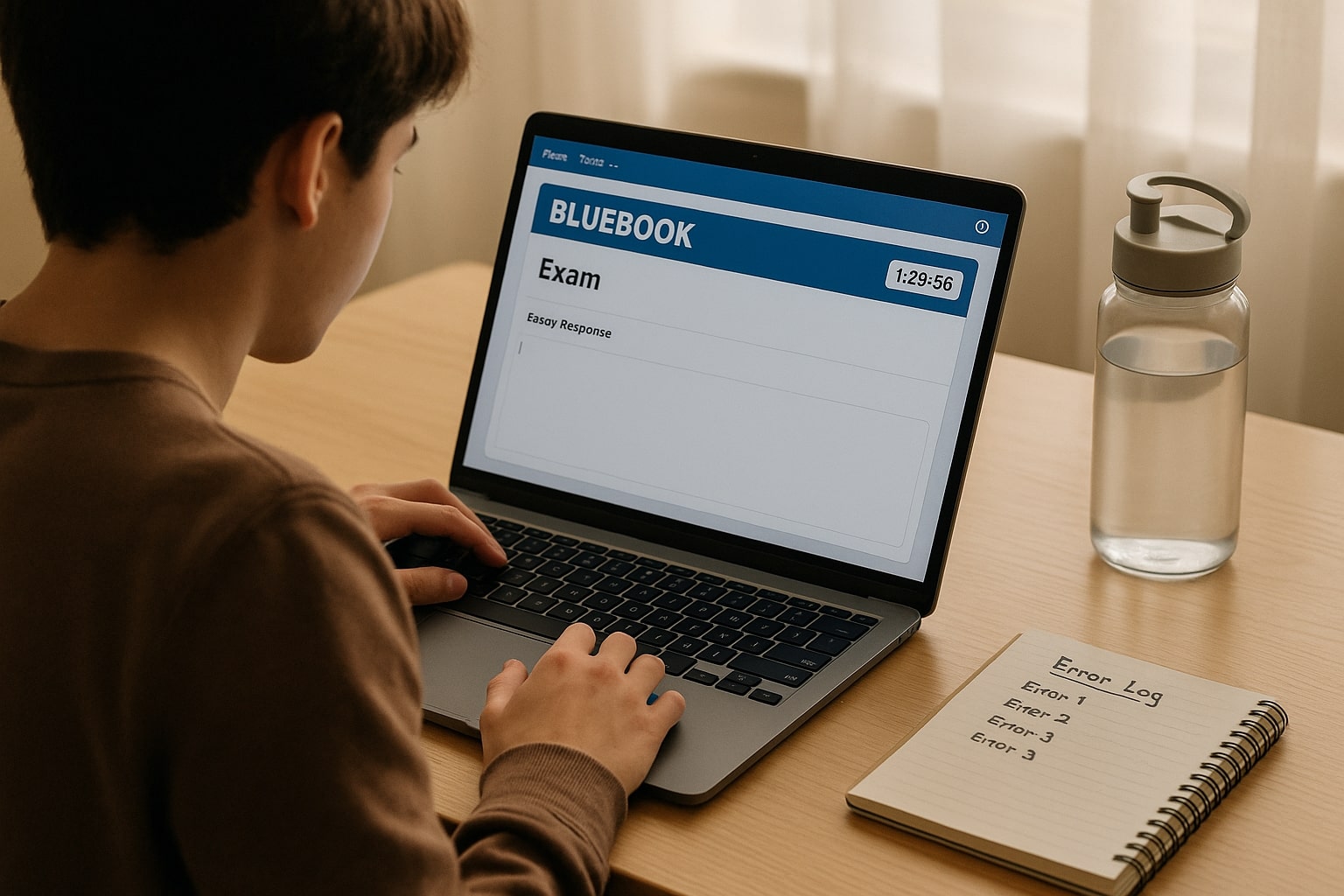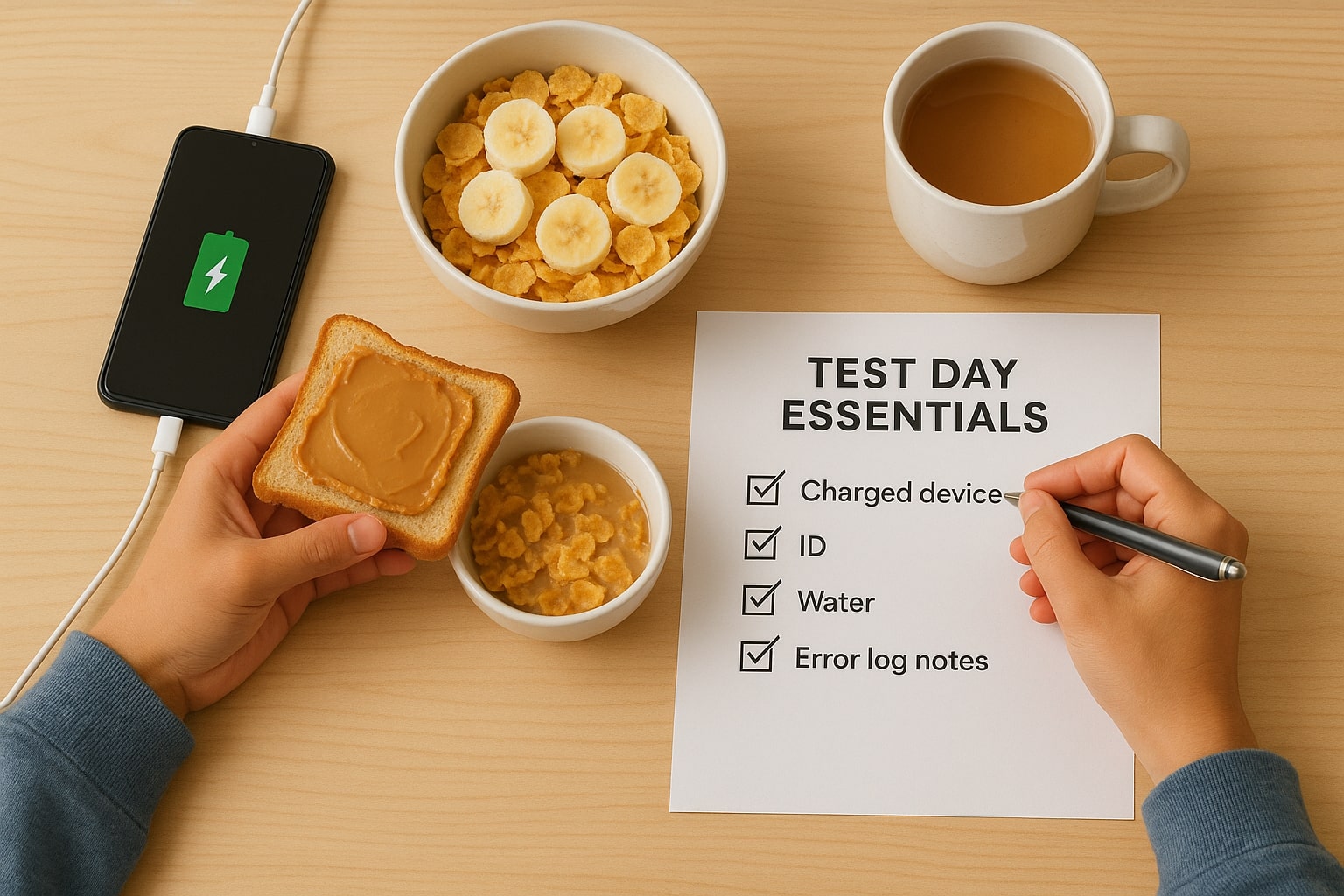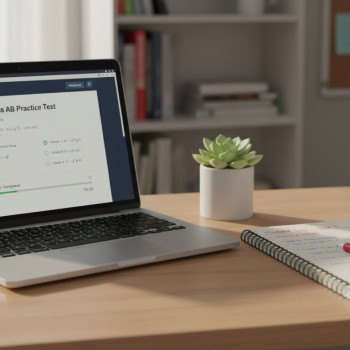Why habits matter more than hustle
If you’ve ever pulled an all-nighter, promising yourself you’ll “cram it all in” and then felt like a foggy version of yourself on test day, you already know a secret: intensity without structure burns out fast. The Digital SAT isn’t just a test of knowledge — it’s a test of endurance, attention, and smart habits. Building healthy, repeatable routines will get you farther than short bursts of frantic studying.
This article is a friendly roadmap: how to create study habits that actually stick, how to make the Digital SAT feel less daunting, and how small, consistent changes lead to big score improvements. I’ll share practical examples, a sample weekly plan, a simple data table to track progress, and real-world tips you can start using today. We’ll even touch on where personalized tutoring — like Sparkl’s one-on-one guidance and tailored study plans — can naturally accelerate your growth.
Start with purpose: set a motivating goal
Goals give your routines direction. But vague goals like “do better” or “study more” aren’t enough. Think in terms of clear, measurable objectives that feel meaningful to you.
How to pick a motivating SAT goal
- Pick a target score range, not just a single number. Example: “Aim for 1250–1300.”
- Anchor the score to something personal — a list of colleges, a scholarship cutoff, or a milestone that matters.
- Set short checkpoints: weekly practice-test improvements, timed-section speed goals, or accuracy percentages for question types.
Why ranges and checkpoints? They keep you flexible and help you celebrate progress — even small wins matter.
Design a weekly routine you can actually keep
Consistency beats intensity. A schedule you can realistically follow five days in a row will out-perform a perfect plan you abandon after one week.
Principles for a sustainable schedule
- Small daily actions: 45–90 minutes of focused work beats a 6-hour weekend cram.
- Mix active practice and review: do problems, then review mistakes the next day.
- Keep variety to maintain interest: alternate math, reading, and writing practice.
- Include rest blocks: recovery increases long-term retention.
Sample weekly plan (realistic and flexible)
This is a template you can copy and tweak based on school, activities, and energy levels.
| Day | Morning (30–45 min) | Afternoon/Evening (45–90 min) | Focus |
|---|---|---|---|
| Monday | Flashcards (vocab/grammar rules) | Practice math section + review errors | Accuracy, core math skills |
| Tuesday | Timed reading passage (1) | Targeted grammar/writing drills | Reading speed + grammar |
| Wednesday | Quantitative fluency exercises | Mixed practice set (30 min) | Build stamina |
| Thursday | Timed reading passage (2) | Math problem sets + review | Application of strategies |
| Friday | Quick full-section warm-up | Review week’s errors; consolidate notes | Reflection & consolidation |
| Saturday | Full-length practice test (Digital format) | Relax and light review of hardest problems | Test simulation + recovery |
| Sunday | Rest or light review (30 min) | Plan next week, set micro-goals | Rest + planning |
Note: For Digital SAT prep, simulate the testing environment (Bluebook or other approved app) when you take full-length practice tests. That helps your brain and fingers get used to the interface, navigation, and timing.
Sleep, nutrition, and movement: the underrated study boosters
Test prep often focuses on books and practice tests — but sleep, food, and exercise are the quiet superpowers of learning. When you optimize them, everything else becomes easier.
Sleep: prioritize it like an exam section
- Aim for 8–9 hours if you can; 7 minimum. Memory consolidation happens during deep sleep.
- Keep a consistent bedtime. Your brain loves predictability.
- Avoid intense screen time 30–60 minutes before bed. If you use your device, switch to night mode and a lower brightness.
Nutrition: fuel for focus
- Breakfast matters: protein + complex carbs sustain concentration (eggs + whole-grain toast, yogurt with fruit and nuts).
- Snack smart: almonds, fruit, or a yogurt are better than sugary drinks that crash your attention.
- Stay hydrated: even mild dehydration reduces cognitive performance.

Movement: 10–20 minutes goes a long way
Short exercise bursts — a brisk walk, jumping jacks, or a 10-minute yoga flow — increase blood flow and reset attention. Schedule short movement breaks during long study blocks.
Active practice beats passive review
Reading notes feels productive, but active practice (timed sections, retrieval practice, and error analysis) builds the skills you need on test day.
Effective active practice strategies
- Timed practice: Do sections under test-like timing to build pacing. For Digital SAT, practice with the digital interface where possible.
- Spaced repetition: revisit weak topics over intervals — after 1 day, 3 days, 1 week.
- Retrieval practice: close the book and write down what you remember; then check. That strengthens recall.
- Error logs: track each mistake and annotate why it happened (concept gap, careless error, misread question, time pressure).
Example error-log entry:
- Question: Math — linear equations.
- Mistake type: Set-up error (mis-copied coefficient).
- Fix: Re-check copying step; practice 10 mixed setup problems.
Designing practice that targets your weak spots
Smart practice is diagnostic. If you don’t know why you miss questions, you can’t fix the root cause.
Four-step fix loop
- Run a timed section to create fresh errors.
- Do a focused review session where you categorize mistakes.
- Create a micro-drill that targets the most common error type.
- Re-test the same skill in a new set or the next practice test.
Over several weeks, this loop shrinks your error categories and turns weaknesses into strengths.
Build rituals that reduce decision fatigue
Decision fatigue — the drain that comes from making lots of small choices — makes study harder than it needs to be. Rituals reduce friction and help you get into productive states faster.
Examples of simple, high-impact rituals
- Pre-study 5-minute routine: water, quick stretch, open practice app, set a timer.
- Pomodoro-style work: 25–45 minutes focused, 5–15 minutes rest. Use a physical timer or your phone’s timer (airplane mode is helpful).
- End-of-session review: spend 5 minutes summarizing what you learned and what you’ll do next session.
Stress-proof your prep: mental habits that calm and focus
Stress is part of the process. The trick is to prevent stress from hijacking your attention.
Quick mental tools
- Box breathing: inhale 4, hold 4, exhale 4, hold 4 — two minutes quiets nerves.
- Reframing: replace “I must get X score” with “I’m preparing to show what I’ve learned.” Pressure turns into purpose.
- Visualization: before a practice test, imagine steady pacing, reading clearly, and calmly checking your answers.
These tools take seconds but pay dividends in calmer, more accurate performance.
Simulate test day — repeatedly
There’s nothing like experience. A few realistic full-length digital simulations before test day will build both stamina and confidence.
How to run an effective simulation
- Use the same format: digital app, device, and headphones if permitted.
- Start at the real test time where possible; mimic your morning routine (breakfast, commute, arrival time).
- Follow official timing and breaks. Don’t skip the post-test debrief — that’s prime learning time.
Track progress simply — let the data guide you
Tracking doesn’t have to be complicated. A simple spreadsheet or notebook with weekly metrics is powerful.
| Week | Full Test Score (est.) | Timed Section Accuracy | Top 2 Weak Areas | Notes/Actions |
|---|---|---|---|---|
| Week 1 | 1100 | 68% | Algebra setup, Reading speed | Daily setup drills; 2 timed passages/day |
| Week 4 | 1180 | 74% | Complex sentence structure | Grammar micro-drills; spaced repetition |
| Week 8 | 1250 | 80% | Pacing under time | Simulate test mornings; pacing practice |
Update this table weekly. Over time you’ll see trends and be better at assigning practice where it matters most.
When to bring in extra help — and what to look for
Most students benefit from a little outside support. The trick is to ask for help strategically, not as an emergency rescue. If after a few weeks you’re not improving on practice tests or your error log shows the same recurring issues, it’s time to level up.
What effective personalized tutoring provides
- One-on-one guidance: a tutor can diagnose subtle misunderstandings that generalized resources miss.
- Tailored study plans: instead of general practice, you get a sequence that targets your unique weak points.
- Expert tips on pacing and strategy for the Digital SAT format.
- AI-driven insights (where available) that highlight patterns in your mistakes and suggest focused drills.
Sparkl’s personalized tutoring, for example, can fit naturally into this stage: their 1-on-1 guidance, tailored study plans, and expert tutors help students convert error logs into precise study actions. If you’re juggling school, activities, and prep, that kind of targeted support can save time and prevent wasted practice.
Practical tools and habits for the Digital SAT specifically
The Digital SAT has specific interface and timing differences compared to paper tests. Learn them early so they stop being distractions and become advantages.
Digital-specific habit checklist
- Practice with the app or interface similar to Bluebook so navigation becomes automatic.
- Work on keyboard/mouse or trackpad fluency if your allowed device uses those inputs.
- Build a tech-prep ritual: fully charge device, clear storage space, close unused apps.
- Train for question grouping: the digital format may bundle questions differently, so practice transitioning quickly between question styles.

Keeping motivation alive: social and reward strategies
Studying alone is hard. Inject social accountability and small rewards so the work feels less like a grind.
Simple ways to stay motivated
- Study buddy system: two students check in weekly and share one new strategy.
- Micro-rewards: after three focused sessions, allow a 45-minute movie or hangout.
- Celebrate milestones: improved section scores, streaks of consistent practice, or completing a certain number of timed passages.
Motivation fluctuates — habits keep you moving even when you don’t feel like it.
What students say: common challenges and solutions
Here are real problems students face and practical fixes that fit into the habit framework above.
- “I study but my score doesn’t change.” — Often due to unfocused practice. Fix: keep an error log, target one weakness per week, and use timed sections to measure improvement.
- “I burn out mid-month.” — Overtraining without adequate rest. Fix: schedule deliberate rest days and shorter daily sessions, not marathon weekends.
- “I panic during tests.” — Anxiety interferes with thinking. Fix: rehearsed routines (box breathing, pacing plan) and several realistic simulations to normalize the experience.
Putting it all together: a 6-week jumpstart plan
This condensed plan is for students who want a focused sprint. Adjust pace based on your baseline and deadlines.
- Week 1: Baseline full-length digital test, identify 3 weak areas, set a target score.
- Week 2: Build a daily routine (45–90 min), start small drills for weakest area, sleep and nutrition check.
- Week 3: Increase timed practice; start error log habits; add two short simulated sections per week.
- Week 4: Full-length simulation under test conditions; review pacing; adjust study plan.
- Week 5: Focus on rapid error corrections and mixed practice; simulate test morning once.
- Week 6: Light review, one full simulation early in the week, taper intensity and prioritize rest before test day.
If you find yourself repeating the same mistakes after week 3, consider adding personalized support. Tutors who offer tailored study plans, like Sparkl’s tutors, can pinpoint subtle patterns and speed up improvement with focused sessions and AI-driven insights.
Final checklist for daily habit success
- Set a clear, motivating score goal and three weekly checkpoints.
- Follow a repeatable weekly routine with short daily sessions and one full-length simulation/week.
- Sleep, eat, and move consistently to improve cognitive performance.
- Practice actively: timed sections, retrieval practice, and error analysis.
- Use rituals to reduce decision fatigue and preserve focus.
- Bring in personalized tutoring when progress plateaus to get targeted, efficient improvement.
Parting encouragement
Building healthy habits is not glamorous. It’s small choices made repeatedly: choosing to review one more error, to sleep a little earlier, to practice consistently instead of frantically. The Digital SAT rewards calm focus and steady improvement. If you treat your preparation like training — with rest days, diagnostics, and incremental overload — you’ll arrive on test day sharper, calmer, and ready to show what you know.
And remember: help is there when you need it. Whether it’s a trusted teacher, a study buddy, or a personalized tutor offering tailored plans and insights, you don’t have to do it alone. With thoughtful habits and a clear plan, you’ll make practice count — and that momentum will carry you through test day.
Ready to start?
Pick one small habit from this guide and commit to it for one week. Track one metric. After seven days, reflect: did it make your study smoother? If yes, keep it. If not, tweak it. The path to improvement is rarely a straight line, but with steady habits, progress is inevitable.
Good luck — you’ve got this.




















No Comments
Leave a comment Cancel